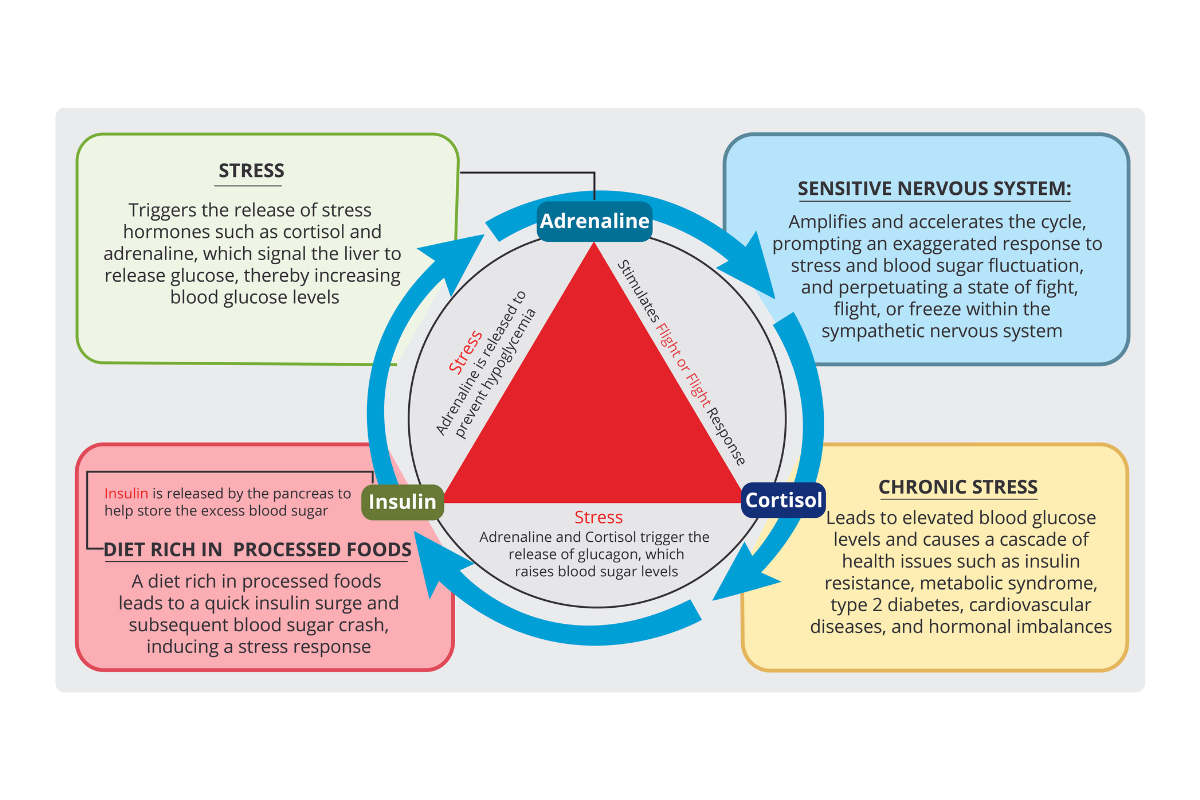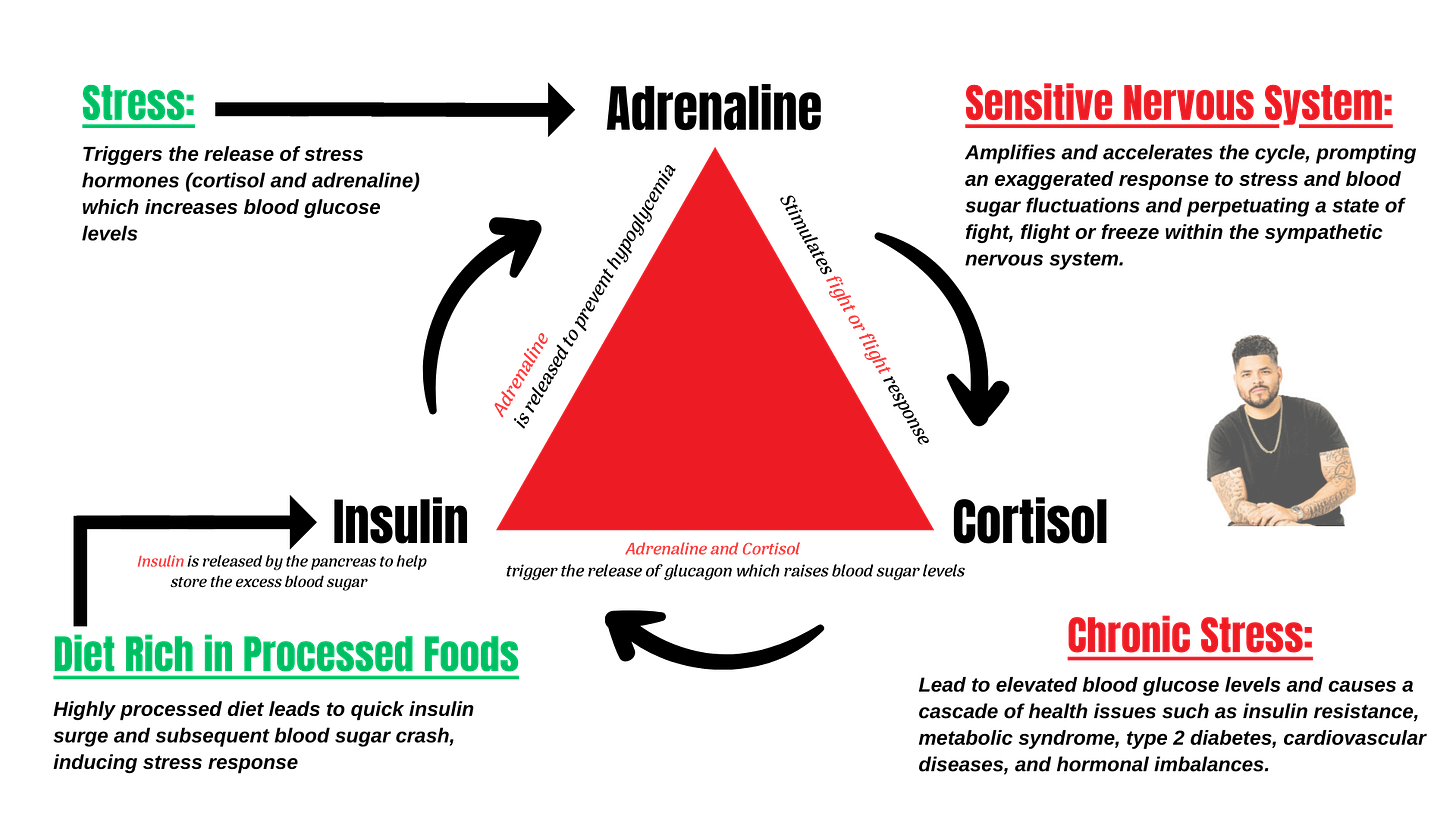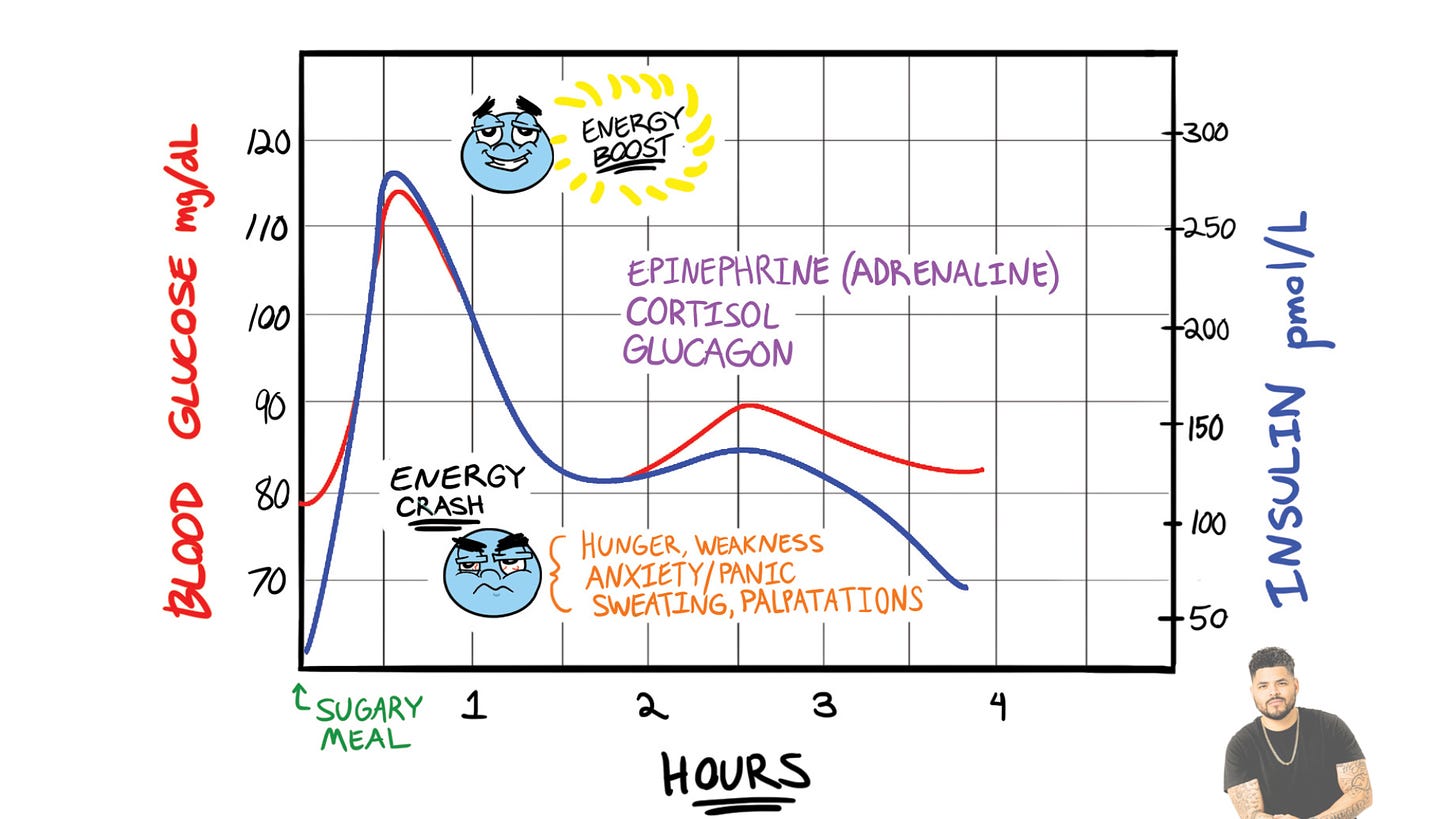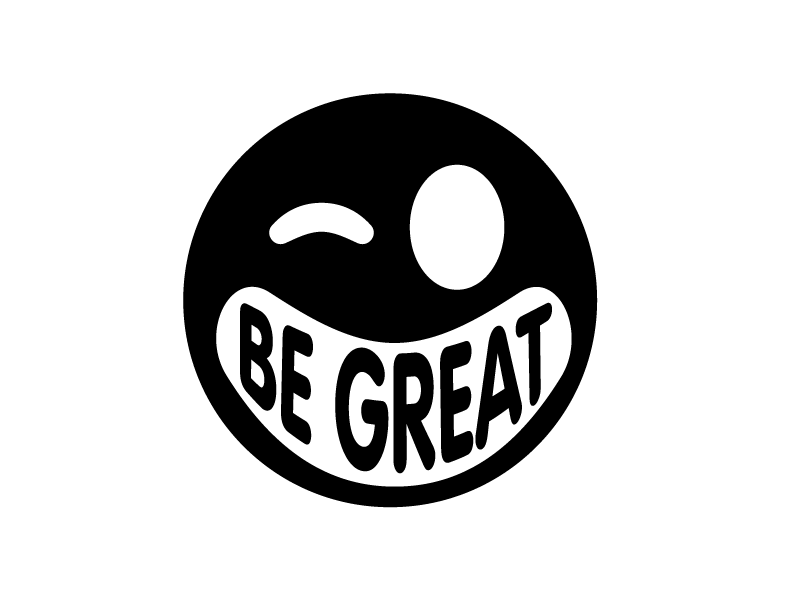The Unseen Cycle of Weight Loss

Before we dive into today's essay overview, I want to make something clear. I've identified three levels of weight loss: the surface, middle ground, and root. In this issue, we'll mostly cover the surface problems you can tackle to build momentum and consistency. We'll also briefly touch on the middle ground and root issues.
Weight Loss Blueprint Overview: In part one of the Weight Loss Blueprint, we'll dive into the following topics:
- The Science of Weight Loss: Understanding why 95% of people who lose weight end up gaining it back, and then some.
- Hormones and Their Role in Weight Issues: Exploring how hormones significantly impact our weight.
- The BeGreatWithNate Weight Loss Approach: A holistic health perspective on losing weight.
- Review of Questions from Our Last Newsletter: Addressing hunger and sugar cravings, along with sweating in your sleep
Weight loss: The Science –The Surface The science behind weight loss seems straightforward: To lose weight, you must burn more calories than you consume. This principle is the first thing most health practitioners will tell you, and it's precisely where I often find myself at odds with them. Here's why.
Calories are simply units of energy. Your body needs this energy to function correctly. It takes a certain amount of energy for our bodies to perform basic functions like breathing, circulating blood, and producing cells. This energy requirement is known as the basal metabolic rate (BMR).
Beyond these basics, calories are also expended through physical activities, ranging from simple tasks like walking and standing to more vigorous exercises like running or weightlifting. Additionally, the process of digesting food itself burns calories, contributing to what is known as the thermic effect of food (TEF).
To support overall health and meet energy needs, it's important to consume an adequate amount of calories that aligns with your body's demands, taking into account your age, sex, weight, height, and activity level.
Let's simplify how to understand calories' role in weight loss with an estimation technique that's generally quite accurate. To estimate your maintenance calories based on activity levels, you can multiply your current weight by:
- 13 if you don't exercise at all,
- 15 if you exercise a few times a week, or
- 18 if you exercise five days or more a week
Assuming you weigh 200 lbs and are sedentary (not exercising at all), you would calculate your maintenance calories as follows: 200 lbs x 13 = 2,600 calories per day to maintain your weight. If you're looking to lose weight, you'd aim to consume fewer calories than this estimated maintenance level, creating a caloric deficit, which leads to weight loss.
To lose weight, you can opt to either consume fewer calories or increase physical activity to burn more calories. It's important to understand that one pound of fat is equivalent to 3,500 calories. By reducing your caloric intake or increasing calorie burn by 500 calories per day for a week, you can expect to lose approximately one pound of fat.
So, where do I begin to bump heads with those to preach it’s all about calories? While a caloric deficit is indeed necessary for weight loss, it's not the underlying cause of weight gain. Consider this: if you're constantly hungry and fatigued, how realistic is it for you to maintain a caloric deficit or have the energy to engage in activities that burn more calories? It's important to address these fundamental issues for sustainable weight management. This brings us to the second section of this newsletter–hormones.
Weight Loss Blueprint – Hormones: The Middle Ground
Now, let's delve into the BeGreatWithNate Approach, particularly focusing on hormones. Quick question: how many people do you know (yourself included) who suffer from hormonal imbalances along with chronic stress or trauma? hmm…
Trauma and stress both release the stress hormone cortisol, which is a key player in every hormonal imbalance.
Trauma, including childhood trauma and PTSD, leads to higher serum cortisol levels than those found in individuals without such experiences. Why is this an issue? Cortisol is intricately linked with two other significant hormones: adrenaline and INSULIN.

Insulin's role is to transport glucose (sugar) from our bloodstream into our cells to produce energy. However, the issue arises when cortisol levels are elevated, a common result of chronic stress or PTSD.
This elevation in cortisol can lead to increased blood sugar levels, prompting insulin to act swiftly to store this excess sugar. Consequently, your blood sugar levels drop, leading to an energy CRASH.
Given glucose is a crucial fuel for the brain, this drop triggers either cravings for sugar—resulting in snacking on junk food or seeking quick energy boosts—or it activates adrenaline to prime the HPA Axis and endocrine pathways, prompting the adrenal glands to release more cortisol.
This is what I call the Trifecta Cycle—Adrenaline, Cortisol, and Insulin. An imbalance in any one of these hormones—cortisol, adrenaline, or insulin—can set off a domino effect that impacts the others, creating a relentless cycle of stress and blood sugar fluctuations. This cycle often results in heightened stress levels, fatigue, and weight problems.
Stress and trauma prompt the body to release adrenaline, a primary stress hormone, which interacts with the sympathetic nervous system. Following adrenaline, glucocorticoids such as cortisol are secreted, which, in turn, signal the liver to increase glucose production. These hormonal responses are part of the body's natural alarm system, preparing it for quick energy utilization and heightened awareness.
Trauma is instantly stored in the mind (in the hippocampus) and the body (across five layers of energy), leading to a rewiring of neural pathways in the brain to anticipate future threats similar to the initial traumatic event. Chronic stress, meanwhile, becomes ingrained in our subconscious over time through repetition. Both create something I call a Sensitive Nervous System, one that overreacts to stress, even when it's minor.
Addressing calories in vs. calories out is not the top priority for individuals with a Sensitive Nervous System. Their heightened sensitivity state triggers the Trifecta Cycle—Adrenaline, Cortisol, and Insulin—more rapidly, causing an overreaction to stress, carbohydrates, caffeine, and anything that stimulates any of the hormones within this cycle.

Let's revisit the concept of calories in vs. calories out for a moment. Imagine you've decided to reduce your calorie intake and exercise more. But then, suddenly, your blood sugar levels drop. This triggers your body's fight-or-flight response, releasing adrenaline and cortisol. These stress hormones work to get glucagon to release stored sugar, raising your blood sugar levels a bit. Now, ask yourself: is it easy to maintain a caloric deficit when you're feeling tired and hungry? Naaaa
Exposing the Unseen Cycle: Why My Clients' Best Intentions for Weight Loss and Health Are Met with Unexpected Challenges
Weight Loss Goal → Calories In vs. Out → Hunger + Fatigue → Overeating + No Exercise → Weight Gain → Criticism (Laziness/Incorrect Calorie Counting) → Self-Critique + Increased Effort and Spending → Weight Fluctuation + Health Issues (PCOS, NAFLD, High Triglycerides, Visceral Fat, Diabetes) → Worsened Cycle (More Fatigue + Hunger + Mental Health Concerns)
This sheds light on why 95% of individuals who go on diets and lose weight end up regaining all of it.
Now that we've delved into the unseen cycle—the Trifecta Cycle—it's time to present a blueprint that can significantly impact your journey towards weight loss, improved energy, and better overall health.
I've assisted thousands of clients globally with this exact approach. However, don't just take my word for it—experience its benefits firsthand. By implementing this formula, you can expect to stabilize your blood sugar, alleviate stress, minimize inflammation, and curb food cravings.
We have to make a quick deal though. You have to start tracking your weight from tomorrow until Monday (next newsletter) and update me in the comments down below. Deal? Ok, cool.
Now, follow this approach:
- Download MyFitnessPal or Lose It.
- Ignore calories for now; aim for at least 80 grams of protein a day (or higher).
- Limit carbs to under 100 grams a day—avoid starches, processed sugar, or grains. Opt for berries, green apples, leafy greens, avocados, and veggies.
- Typically, the remaining calorie intake will naturally consist of nutritional fats.
- Calculate your water intake: take your body weight, divide it by 2, and drink that number in ounces of water each day.
- With 5 days until Monday, aim to go for at least 3 walks, lasting 45-60 minutes each.
That's it. Ha! I'm not diving into the reasons just yet. Why? Because I know how it goes. The more complex I make this, the less likely you are to follow through—you're already stressed out!
We're keeping it simple here; I've done all the thinking and problem-solving for you :) On Monday, I'll explain why we're taking this approach.
Hey, I have one more favor to ask. All I ask on this journey together is for you to be honest—not just with me, but also with yourself. We can't transform our minds, bodies, and emotions without honesty. Think about it this way:
The old version of you has habits—sensations, feelings, thoughts, and perceptions. The new version we're aiming to become—your New Self—needs to be wired into your subconscious, along with new sensations, feelings, and thoughts, gradually creating new perceptions.
The old version of you has habits—sensations, feelings, thoughts, and perceptions. The new version we're aiming to become—your New Self—needs to be wired into your subconscious, along with new sensations, feelings, and thoughts, gradually creating new perceptions.
At the end of the day, it's best to keep weight loss simple!
If you need help with learning more about keeping weight loss simple, you can read my essay on that here.
It’s always a Great day to be you; you know that!
BeGreatWithNate
